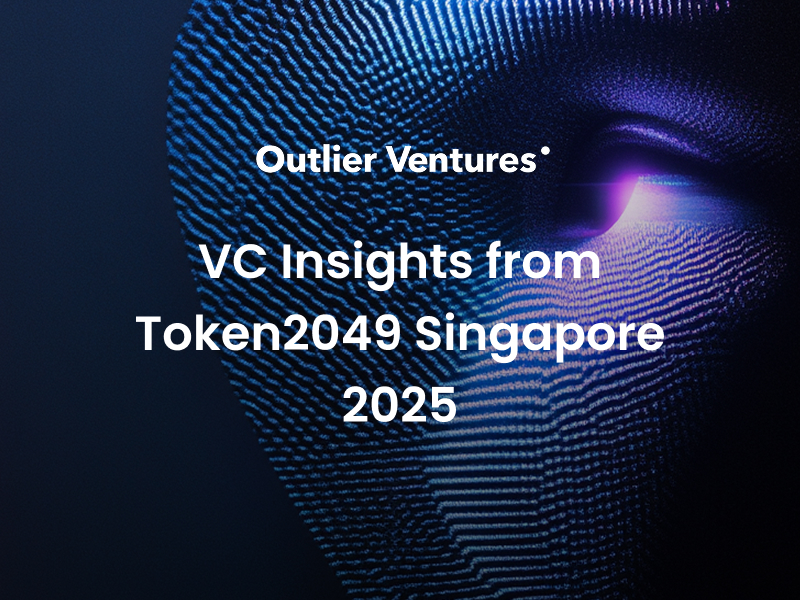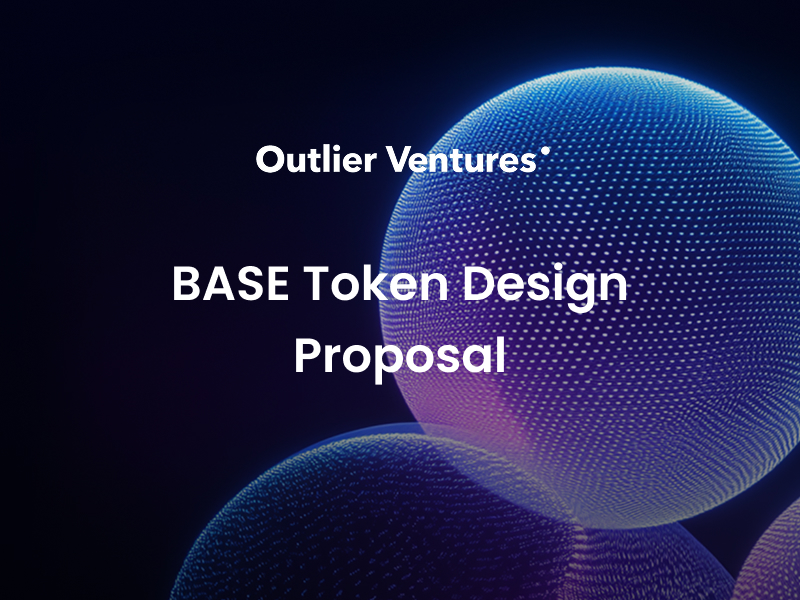A New Phase of the Internet: From Execution to Intention
The next evolution of the Internet isn’t just about automating execution instead it’s about automating intention. This is the foundation of the Agentic Layer in the Post Web, a new stratum of the technology stack where autonomous AI agents act on behalf of humans, interpreting goals, making decisions, and executing actions across decentralised systems.
Web3 gave us a decentralised Internet of ownership. Smart contracts made it possible to trustlessly automate transactions and agreements between parties. This ushered in a new financial and organisational infrastructure, but where Web3 was about programmable money, the Post Web is about programmable agency.
“AI agentic systems mark the beginning of a new paradigm. With their capabilities to orchestrate intention, navigate complex virtual environments, and achieve sophisticated outcomes, they are poised to transform the global economy.”
— Greysen Cacciatore, Research Associate, Outlier Ventures (p. 40)
What Are Agents and How Do They Differ from Bots?
At first glance, “AI agents” might sound similar to the bots and scripts already common across the Internet. But the distinction is profound.
Exhibit 11: Comparison of Bots & Agents
| Bots | Agents |
| Follow predefined instructions | Pursue goals and adapt dynamically |
| Deterministic — fixed input/output | Probabilistic — outcomes evolve with context |
| Task-based and reactive | Intent-based and proactive |
| No capacity for learning | Continuously learns and optimises |
(Post Web, Chapter 2, See Exhibit 11, p. 42, “Comparison of Bots & Agents”)
The main difference? Traditional bots automate tasks. Agents automate outcomes.
Agents are goal-oriented, adaptive systems that operate effectively in complex, dynamic environments. They learn from experience, optimise their decision-making, and even collaborate with other agents. These behaviours that were impossible in the Web3 era. This shift turns digital interaction into something alive: responsive, context-aware, and capable of reasoning.
Smart Agents: The Economic Actors of the Post Web
Exhibit 12: Comparison of Bots, Agents & Smart Agents

(Post Web, Chapter 2, Exhibit 12, p. 43, “Comparison of Bots, Agents & Smart Agents”)
The Post Web thesis introduces the concept of Smart Agents, these are a next-generation class of AI agents that can directly interact with distributed ledger technology (DLT) and smart contracts. These agents don’t just consume APIs or data feeds, instead they can own tokens, sign transactions, and execute contracts autonomously.
In essence, smart agents are the economic participants of the Post Web. They are capable of managing digital assets, verifying ownership, enforcing agreements, and carrying out complex workflows in real time.
To enable this safely, two key mechanisms are introduced:
- On-Chain Specification: allows users to encode specific goals, boundaries, and constraints into an agent’s behaviour and ensure it operates according to defined principles.
- On-Chain Verification: records all actions immutably, allowing anyone to audit what an agent has done and verify outcomes.
Together, these create a trust framework for autonomous digital economies, where human oversight and cryptographic verifiability coexist.
How Smart Agents Are Classified
Exhibit 13: Classification of Smart Agents by Orchestration, Ownership & Purpose

(Post Web, Chapter 2, See Exhibit 13, p. 46, “Classification of Smart Agents by Orchestration, Ownership & Purpose”)
The Post Web doesn’t imagine one kind of agent. It envisions an entire ecosystem of smart agents that are classified along three key axes:
- Purpose
- Special-purpose agents perform narrowly defined roles (e.g., portfolio managers, supply chain optimisers, or content curators).
- General-purpose agents can adapt to diverse environments and objectives, functioning as multi-modal assistants or autonomous co-founders.
- Special-purpose agents perform narrowly defined roles (e.g., portfolio managers, supply chain optimisers, or content curators).
- Ownership
- User-owned agents deployed and governed by individuals, acting purely in their interest.
- Platform agents operated by organisations or networks to deliver services at scale.
- Independent agents may evolve into self-governing entities with their own incentive structures, introducing a new class of digital organisms.
- User-owned agents deployed and governed by individuals, acting purely in their interest.
- Orchestration
- Individual agents work alone on discrete tasks.
- Collective agents or swarms collaborate and negotiate with each other to solve complex, multi-dimensional problems such as resource allocation or cross-protocol coordination.
- Individual agents work alone on discrete tasks.
This diversity of form and function hints at a future Internet that behaves more like an ecosystem than a network, alive with self-directing entities optimising for efficiency, value creation, and coordination.
From Automation to Autonomy
In Web3, smart contracts automated trust. They executed actions without intermediaries, but they relied on users to supply intention; to write code, initiate transactions, and manage outcomes.
In the Post Web, smart agents automate intention itself. They interpret goals expressed in natural language, determine the best course of action, and negotiate with protocols to execute those goals autonomously.
Imagine the following scenarios:
- An investment agent that dynamically reallocates your assets based on your risk profile.
- A governance agent that votes on proposals across multiple DAOs aligned with your principles.
- A social agent that negotiates brand partnerships or community contributions on your behalf.
These are not just theoretical concepts any more. As reinforcement learning, natural language models, and decentralised compute continue to converge, they form the Agentic Layer. This is a new layer of the web designed to host and coordinate these intelligent actors.
Why the Agentic Layer Matters
The Agentic Layer represents a fundamental evolution of the web’s architecture, a shift from passive interfaces to active, autonomous participants:
- For users, it means delegating complexity to agents that operate transparently and securely: manage assets, interact with dApps, verify identities, and make informed decisions.
- For developers, it unlocks new primitives for building: agent-to-agent protocols, marketplaces for autonomous services, and agent orchestration frameworks.
- For the broader economy, it introduces a new class of digital labour that isn’t limited by human time zones or bandwidth, but governed by cryptographic verification and open incentives.
This is the Post Web: an intent-based, adaptive, and verifiable internet, where humans, agents, and protocols collaborate in an economy of continuous coordination.
The Role of Interoperability in the Fabric of the Agentic Web
As the agentic web is built out, we need to recall a crucial distinction that will shape its architecture. As Chris Dixon notes, the design of the network determines who builds and who owns it. Protocol networks – open, permissionless, and built on shared standards, must prevail over closed, rent-extractive corporate networks.
For the emerging agentic economy, this distinction is not ideological but practical: without interoperable standards, we risk reproducing the fragmentation of today’s Internet. The maturation of composable standards such as MCPs, A2A, x402, and ACP by Virtuals is key, yet their evolution must follow a Web3 ethos: open-source, transparent, and anchored on distributed ledgers that keep agents accountable.
These protocols will become the connective tissue of the agentic web, allowing agents to coordinate, transact, and reason safely across systems. In short, the same ethos that decentralized ownership in Web3 must now decentralize agency itself.
Final Thoughts: The Web Awakens
The Post Web isn’t just the next generation of infrastructure but instead it’s a living network. A web that understands, adapts, and acts. Where once humans programmed the Internet, soon we’ll simply express intent and our agents will do the rest.
This evolution will “transform how we interact with technology, data, and one another” and re-architecture the web in a way that puts agency at the core of digital experience.
Credits & Source
Content derived from The Post Web Thesis, Chapter 2: “Turning the Web3 Tech Stack into the Post Web Stack”, Outlier Ventures (2025). Cited pages 39–46.
Be one of the first to read our vision for the reimagined Internet. Sign up below to get early access to The Post Web Thesis, Chapter 3: “Zero to Many.” Coming soon.





